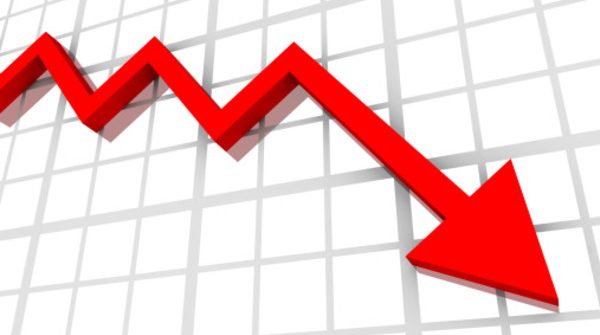Recent trend shows a steep decline in customer satisfaction across the globe. Particularly America is in decline.
The American Customer Satisfaction Index (ACSI) measure overall customer satisfaction in the U.S. The score is from 1 to 100 and it benchmarks industry level for customer satisfaction. Latest measurements show customer satisfaction has been dropping consistently for the past seven quarters.
The report shows that customer satisfaction drops across all measured industries in the manufacturing and nondurable goods sector. Though overall inflation is low, food and beverage prices have increased and this is contributing to lower customer satisfaction with non-durable products. Nearly all companies score lower now compared to a year ago.

Denmark also shows declining tendency in customer satisfaction. The main root of the cause is the lack of priority customer satisfaction receives in the service industry. Particularly, the correlation between satisfaction and customer spending habits have gone unnoticed in Denmark. For the United Kingdom, the most recent data shows an all time record breaking score stabilising at 75,7 points. Even though the UK score is lower than the highest score in the US, the UK trend shows no sign of declining (NCSIUK).
Industry overview of customer satisfaction
| Wal-Mart Continues to Decline Further Among Department & Discount Stores | Supermarket satisfaction Erode With Increasing Food Costs | |
| Customer satisfaction with department and discount stores stays flat with at a score of 77 but with an increase in the gap between companies. Nordstrom gains 4 percent to a score of 86 (market leader), while Wal-Mart drops 4 percent to 68 and sit firmly in the bottom of the category. Wal-Marts current level is the lowest since 2007. | Supermarket customer satisfaction is down 2.6 percent to an ACSI score of 76. The rising cost of food played a major role in this development with the increase in cost by 3.4 percent from last year. In contrast Consumer Price Index went up just 0.8 percent.
|
| Satisfaction steady for Full-Service Restaurants; Widespread Declines for Fast Food | Online satisfaction has Increased despite Physical Stores’ Declining. |
| Full-service restaurants see similar score in satisfaction from last year (83). According to guests, full-service restaurants excel at getting food orders right (89), Food and beverage quality is high (87 and 86, respectively) and restaurants are clean with a good layout and courteous wait staff (both 86). In contrast, limited-service declines 3,8 % (from 80 to 77). Particularly due to lack of menu variety and recession in courtesy and helpfulness of staff recorded. | Internet shopping is as one of the only industries that has seen increase in Customer satisfaction from last years results. On the other hand, retail industry continues its stagnating development. According to a report released by the American Customer Satisfaction Index (ACSI); all brick-and-mortar retail categories show weakening or flat customer satisfaction for the final quarter of 2014. |
Food for thought
“How would your company score on the satisfaction index?”
“Which goals is your business pursuing to improve customer satisfaction?”
“Does you company believe that customer satisfaction is important?”
What makes customer satisfaction go up?
Getting a consistent higher customer satisfaction requires effort. It requires that customer satisfaction is part of the agenda so companies continuous track, monitor and improve on it as a regular financial KPI.
A study from Hong, L. (2011) “Customer satisfaction towards retailers” found that two of the most influential factors for predicting customer satisfaction was the staff and reliability of the service. In the study, staff and reliability scored 82% both in correlation to predicting satisfaction while product quality got 81% (Hong L., 2011)
Four strategic indicators controlling satisfaction
Another study looked at measures to treat customer satisfaction as a strategic variable. In their study, Rana et. Al, found that Responsiveness, product quality, physical design and pricing policies were clear indicators for controlling satisfaction. Particularly responsiveness and product quality were important variables to customers followed by price and physical design.
| Responsiveness | Product Quality | Physical design | Pricing policies |
| Is the staffs’ willingness to be helpful customers, to provide prompt services to the customers and availability of all required items. | Is the capacity of a product to satisfy specific wants and is normally measured by product features, benefits and ability to satisfy required needs. | Is the general appearance of the stores and the staff. It provides to some extent tangible cues about the quality of services that the customers receive. |
Function as indicators of quality. If the price is high then customers expect high quality. This affects experience if expectations are high. |
|
(Rana et. Al, 2014; “Customer satisfaction of retail chain stores” – Journal of Asian Scientific Research, 2014, 4(10): 574-584). |
|||
Read More
Are you interested in knowing more about customer happiness and satisfaction and what you can do to increase it, then you should read our article on strategising surveys to collect more data. Surveys are a great opportunity for you to understand exactly what your customers are thinking and where you can improve in their eyes. We have written several articles on how to incorporate a great survey system from response rate and survey branding to customer journey and what not to do in a survey. You can also read some of the added benefits that understanding your employees has on customer satisfaction, NPS and returning customers.
See you at EuroCIS!
This is it for today’s post. Currently we are very busy getting ready for EuroCIS retail and restaurant trade fair in Dusseldorf. We will bring you posts from the trade fair – hopefully everyday or if you are going, stop by and say hi.

We would love to meet you all!
Much love,
Tabsurvey
